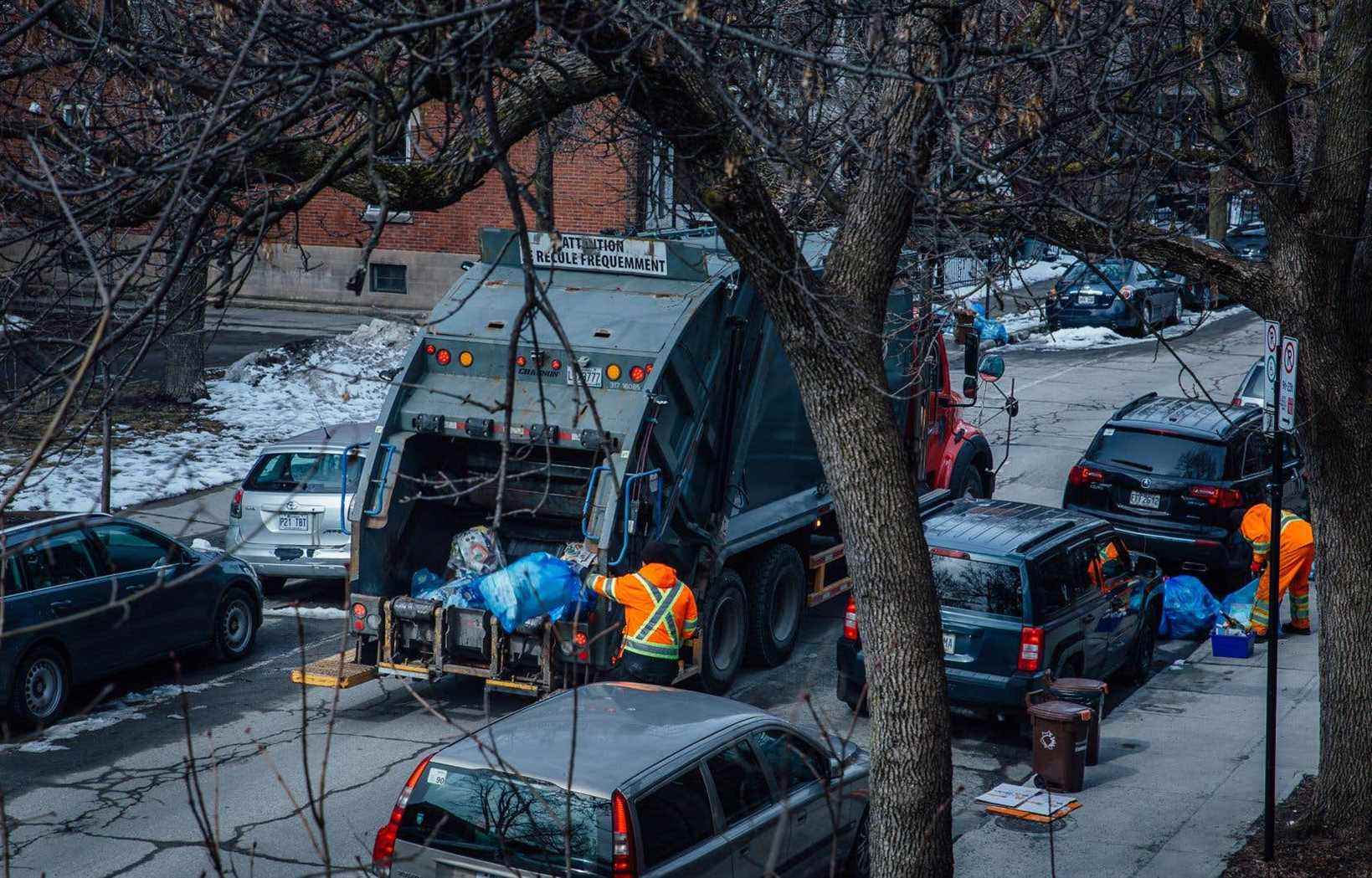Now that all of its residents have a brown bin for their organic waste, the Borough of Mercier – Hochelaga-Maisonneuve intends to reduce the frequency of garbage collection as part of a pilot project that will see the light of day in two sectors as of next february. The collection every two weeks could extend to the whole of Montreal in the coming years.
Fearing a certain resistance, the borough of Mercier – Hochelaga-Maisonneuve (MHM) is taking three months in advance to prepare citizens for this change in habits. “We know that it will be a shock for some. It will shake up habits, but the climate crisis will impose changes that will not necessarily be easy. The garbage crisis is one of them, ”said the mayor of MHM, Pierre Lessard-Blais.
As of February 28, the passage of garbage trucks will be done every other week in two specific sectors – one located in Mercier-Ouest and the other north of Tétreaultville – chosen for the diversity of their built environment. Approximately 7,000 residences will be targeted, as will all institutions and industries and all businesses in these two sectors. At the end of the pilot project, the borough will have to determine whether it is continuing the experiment and whether it is extending it to the rest of its territory. In the medium term, Montreal would like to apply this new schedule to the entire city.
Economic benefits
For the past year, all residents of the borough have had a brown bin. According to Pierre Lessard-Blais, the time has come to move up a gear given the climate crisis and the problems concerning the capacity of the Lachenaie landfill site, which serves the Montreal Metropolitan Community (CMM). “We are there. There are citizens who think that our consumerism is excessive, ”argues Pierre Lessard-Blais. “I think there are a lot of people who expect leadership from the City. “
The City estimates that organic matter currently makes up half of the content of garbage bags, when it should not be found there. “When organic matter goes to landfills, it emits methane, a gas 25 times more powerful than CO2. However, we can make compost with these materials, ”recalls Thierry Sénécal, planning advisor for the MHM borough.
The withdrawal of one in two collections also offers several advantages, both economic and environmental, since fewer trucks will be on the roads.
Saint-Laurent leads by example
To date, Saint-Laurent is the only Montreal borough to have introduced garbage collection once every two weeks. This shift was initiated in 2016, at the same time as the organic waste collection was being rolled out, for buildings with eight units or less.
Its mayor, Alan DeSousa, believes that the time has passed for pilot projects and that Montreal is taking too long to implement a new collection schedule. “If we want to move towards zero waste as stated by the City, the time for pilot projects is over,” he says.
Saint-Laurent’s strategy increased the amount of waste sent to landfills from 32,000 tonnes to 23,000 tonnes between 2005 and 2020, even though 30,000 residents were added over time, underlines Alan DeSousa. The borough now intends to implement the collection of organic materials in buildings with nine apartments, which will result in the elimination of one in two garbage collections in these sectors.
Several Quebec cities such as Gatineau, Longueuil and Sherbrooke have already spaced out collections every two weeks, as have several Canadian cities, including Toronto, Calgary and Ottawa.
Karel Ménard, director general of the Front commun québécois pour une ecological management des waste, believes that the borough of MHM is right to take its precautions before imposing this change of schedule. “If they fail, it will be very hard to start over,” he says.
The project may not be greeted with joy by all residents, he admits. “As soon as we talk about emptying, it affects everyone in their daily lives,” he recalls. “There are people who do not understand that we have reached another level in the management of residual materials. For some, throwing things in the trash is an inalienable right. And they are often more vocal than others. “
